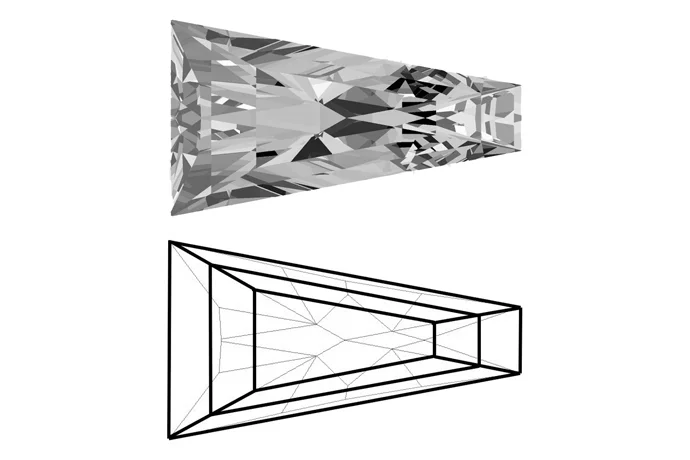Tapered Baguette Cut History
The Baguette Diamond Cut was officially recognized and developed in 1920-1930. But its history dates back quite a while longer, evolving from the antique cut known as the hogback. The hogback cut which held similar characteristics to the Baguette such as its slender appeal and the manipulation of the octahedron shape. The Baguette is one of the most recognizable and sought after diamond cuts today, and while it’s hard to compete with its popularity upon release which is largely due to its elongated triangular shape which symbolized a freedom from the old fashioned cuts, and a celebration of the art deco and Nouveau period.
Why the Tapered Baguette Cut Diamond is so Seductive

The Tapered Baguette Diamond Cut which is created by making use of the slender parts of rough diamonds are the result of the cleaving of an octahedron two times. They do not abide by the common rules of cutting that other cuts must go through. They are crafted using the step-cut method, and have only two rows of facets as well as unbeveled corners. They are both light-weight, and more easily cut compared to some of its counterparts, which translates as a win win for the manufacturer and the customer.
The Tapered Baguette Cut Diamonds are more often than not small yet elongated, and have the added tapered end feature which gives the stone a trapezoidal structure. The Baguette has classic appeal that is hard to come by anywhere else. However, since the Baguettes appeal is so uniquely different than the classic brilliant cuts aimed at achieving a maximum sparkle, they are used as magnificent side stones instead.
How to find the right Tapered Baguette Cut Diamond
The step-cut method which assists in accomplishing the ideal shape of the Tapered Baguette, provides an extremely clear type of cut, and the artisans in charge must be well versed in its usage, as it is not going to hide any imperfections. Since they are used as side stones, the Tapered Baguette Diamonds are best used as pairs or as layouts, and they must be as close to one another in all aspects as possible.


 ENGLISH
ENGLISH 中文
中文